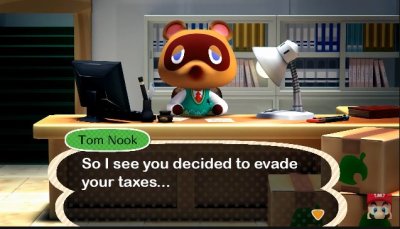
5 Ways to Treat Your Craft Like A Business
Share
It's hard for artists and writers to promote themselves effectively in today's saturated fandom marketplaces, be it Artist's Alley, Twitter, an online storefront, or even your Patreon page. What can you do to stand out and maximize your efficiency?
1.) Your work is a business. Treat it as such.
Monetizing what you love isn't wrong -- but it means you have to treat it seriously, not as a hobby. If most of your money is coming from commissions, conventions, and so forth, you're the man now, dog: you're your own boss and you're running a business. Everyone you interact with will see your online footprint, so make sure it looks good. Conducting yourself professionally doesn't mean that you have to be boring; it just means that you have to curate what you want people to know about you and your work.
Happy Friday! When you work in merchandising you can create anything you want and no one stops you! Here's an ita bag insert of my weird looking cat!
— DUAL WIELD STUDIO (@dualwieldstudio) October 11, 2019
✨Gabriel, the most perfect handsome boy: https://t.co/Y7TSm0lWjO
✨Moon Ita Bag: https://t.co/85zRtwnpQ9 pic.twitter.com/V0jmq0S4om
Keep your social media populated with recent examples of your work, or at the very least places where folks can access them easily. Ensure that if you're sending out physical items you're sending them out on time or communicating the reason why you cannot if you haven't.
2.) Taxes. Yeah, you gotta pay them.
No, this is not advice that replaces legal advice from an accountant. No one wakes up in the morning and thinks, yeah, I'm really excited to figure out how to pay my taxes, especially after a convention. However, avoiding paying your taxes and getting caught for it later is a much more costly mistake to make. The better option is to simply pay your taxes when they're due, which means doing a little research into each state's requirements.

Taxes are, unfortunately, not that universal from state to state. In California, for example, you may have to sign up for a seller's permit and file your taxes through their online site. In Washington DC, you're given a sheet of paper and expected to fill it out and return it. Each state differs wildly and we highly recommend that you do your research in advance but also reach out to other artists who have done the show before! They might have tips and tricks you can rely on when it comes to how to file and best practices. Doing the most basic research into a state's requirements with regards to taxes can help immensely and save you a headache down the road. Don't forget about the taxes you have to pay as a freelancer, as well.
3.) Who are you? What's your name?
Have you ever gone to a convention, stopped a booth, and walked away without a sense of who you bought from? Have you ever searched the name on their business card, shoved in the stack of fifty you've grabbed from all over Artist's Alley, and been unable to find anything?
Remember, you're curating your digital footprint. You want to brand your work; you want to put your name out there. Using a consistent name throughout all of your social media profiles, as well as any portfolio showcases or landing pages, is going to make people remember you and your brand.

4.) Marketing and how to capitalize on holidays or seasons.
Holidays are an important part of the marketing process and one that's often ignored outside of a general post for "20% off!" from most folks. If you're treating your craft as a business, there are some other creative ways that you can try and market around holidays or special events.
Try and release relevant products according to the time of year or holiday. For example, don't release a tank top variant of your favorite print in December, and don't release a heavy winter jacket in July. Do you have a popular product that you could tweak to be a limited edition release for a holiday?
For example, maybe you have a pin that you could redo a limited run of in orange for Halloween or red/green for Christmas. Special colors, prints, or designs are always good methods to tweak existing designs for new but low-investment product. Are you making merchandise for an IP that has a special date in its canon?
For example, if I were releasing Terminator merchandise, what about Sarah Connor's birthday? Or the day when Skynet goes live? Try to think of creative dates that you can use to market to your audience with.
The Alien franchise holds Alien Day every April 26th, reaching out to fans everywhere.
5.) Social Meme-dia?
Social media is a great way to connect with your audience or to find one if you're just starting out. The key to using it, though, is making certain you're leveraging it properly.
Social media isn't just for posting pictures of your cute animals or retweeting memes. It should be a place that you post things like works in progress, finished items, the merchandise you're thinking of making, or anything else related to your craft.
If you're not going to be using email marketing (which, to be fair, can be more trouble than it's worth for just starting out) then social media and convention presence are going to be two of your heaviest hitters when it comes to getting eyeballs on your work. Some really great examples of artists, writers, or content creators who maximize their presence on Twitter are: @SamMaggs; @YoshiSquared; @StillNotSam; @PuccaNoodles; and @MicaBurton.
Know anyone else who is rocking social media to promote themselves? Have questions about best practices for your storefront? Drop us a line on Twitter, FB, or a comment on here and let us know!
